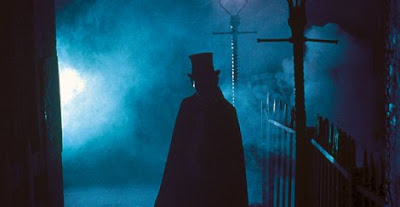Any discussion of Victorian mysteries must start with Jack the Ripper. An elusive serial killer, the still unidentified "Ripper" murdered at least five women between August and November of 1888 in London's East End Whitechapel district. All of his victims were known prostitutes who lived in slum conditions in the cramped London parish.
His sobriquet came from a well-written letter sent to London's Central New Agency in September 1888 and signed in a florid script: Jack the Ripper. Although other letters were sent to various venues, one even including a portion of a human kidney, the name stuck and created a sensation for London news outlets. The Ripper, a ghoul who could take lives with seeming impunity, sent a ripple of fear through the East End four long months.
 In recent years, the Ripper’s crimes and the mystery of his identity have inspired the graphic novel “From Hell” and its film adaptation. Many other books have been devoted to Jack the Ripper, most offering up a theory about his identity. Some are plausible, others bordering on the absurd. Still, the incidents of fall 1888 remain compellingly interesting because they are an enduring mystery that will likely never be satisfactorily resolved.
In recent years, the Ripper’s crimes and the mystery of his identity have inspired the graphic novel “From Hell” and its film adaptation. Many other books have been devoted to Jack the Ripper, most offering up a theory about his identity. Some are plausible, others bordering on the absurd. Still, the incidents of fall 1888 remain compellingly interesting because they are an enduring mystery that will likely never be satisfactorily resolved. Part of the fascination with the crimes relates to the context. In imagining the Ripper, one must consider the back alleys and cobblestoned corners of Victorian London. Writers such as Jack London and Henry Mayhew went into the London slums and documented the conditions in the over-crowded tenements and conveyed the stories of its poverty-stricken denizens. We have ample primary and secondary sources to explicate how difficult and horrific a place it would have been to eek out a living.
Part of the fascination with the crimes relates to the context. In imagining the Ripper, one must consider the back alleys and cobblestoned corners of Victorian London. Writers such as Jack London and Henry Mayhew went into the London slums and documented the conditions in the over-crowded tenements and conveyed the stories of its poverty-stricken denizens. We have ample primary and secondary sources to explicate how difficult and horrific a place it would have been to eek out a living. Still, there is romance in the notion of rain drizzled cobblestones. There is something evocative in the Dore woodcuts of rows of tenement chimneys stretching into the horizon. Yet Victorian London of Jack the Ripper, the area of Whitechapel in particular, was a place of hunger, disease, and danger.
It is the perfect setting for mystery.
.png)



No comments:
Post a Comment